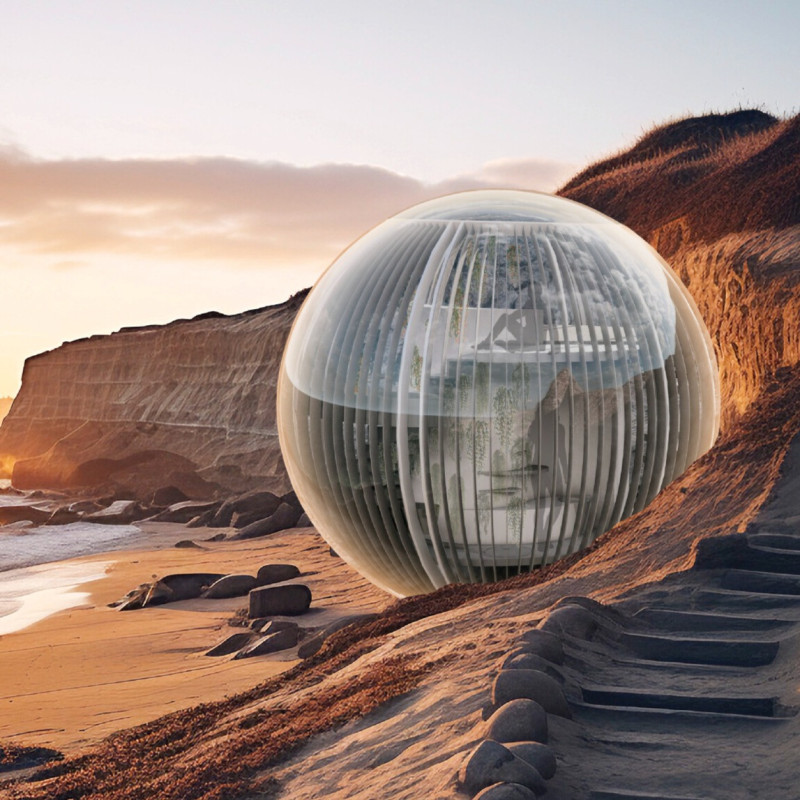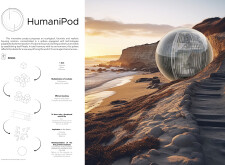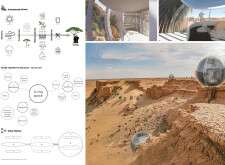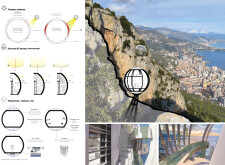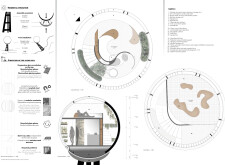5 key facts about this project
### Project Overview
The HumaniPod is a microhome concept focused on integrating ecological and technological features within a spherical design. Located in versatile environments, including urban rooftops, coastal areas, and forested landscapes, the project aims to address contemporary housing needs while promoting efficiency, modularity, and a connection to the natural environment.
### Spatial Strategy
The design emphasizes modularity and adaptability, allowing individual units to expand and configure in various arrangements. This approach mirrors the social dynamics seen in natural formations, such as anthills, fostering both individuality and community interaction. Interior spaces are crafted for multifunctionality, promoting activities that range from relaxation to work, while ensuring a fluid transition between living areas and their natural surroundings.
### Materiality and Sustainability
Material selection plays a crucial role in the project's ecological ethos. The HumaniPod employs a progressive double-skin glass system that provides thermal efficiency and natural light, while recycled steel serves as structural support, underscoring sustainability. Integrated rainwater harvesting systems enhance resource efficiency, and hydroponic and aquaponic setups are included to support food production. These features collectively contribute to a self-sufficient habitat that prioritizes environmental stewardship.


